Physics > A Level Question Paper > Friday 10 June 2022 – Afternoon A Level Physics B (Advancing Physics) H557/02 Scientific literacy (All)
Friday 10 June 2022 – Afternoon A Level Physics B (Advancing Physics) H557/02 Scientific literacy in physics
Document Content and Description Below
Oxford Cambridge and RSA Friday 10 June 2022 – Afternoon A Level Physics B (Advancing Physics) H557/02 Scientific literacy in physics Time allowed: 2 hours 15 minutes * H 5 5 7 ... 0 2 * INSTRUCTIONS • Use black ink. You can use an HB pencil, but only for graphs and diagrams. • Write your answer to each question in the space provided. If you need extra space use the lined pages at the end of this booklet. The question numbers must be clearly shown. • Answer all the questions. • Use the Insert to answer questions in Section C. • Where appropriate, your answer should be supported with working. Marks might be given for using a correct method, even if your answer is wrong. INFORMATION • The total mark for this paper is 100. • The marks for each question are shown in brackets [ ]. • Quality of extended response will be assessed in questions marked with an asterisk (*). • This document has 28 pages. ADVICE • Read each question carefully before you start your answer. © OCR 2022 [601/4745/3] DC (RW/CT) 306524/4 OCR is an exempt Charity Turn over SECTION A Answer all the questions. 1 This question is about the experiment to measure the charge on an electron performed by American physicists Robert Millikan and Harvey Fletcher in the early years of the twentieth century. Consider the forces on an oil drop falling at terminal velocity through air, as shown in Fig. 1.1. D W Fig. 1.1 (a) Ignoring any upthrust forces, state why the drag force D must be equal and opposite to the weight W of the drop when it is falling at terminal velocity. ................................................................................................................................................... .............................................................................................................................................. [1] (b) The drag force is given by the equation D = 6πηairrv where r is the radius of the oil drop and v is the terminal velocity. The symbol ηair represents the viscosity of air; this is a measure of the resistance that air has to the motion of objects in it. Show that the terminal velocity of a drop of mass 1.8 × 10–15 kg is about 7 × 10–5 m s–1. The buoyancy of air may be ignored. density of oil = 8.7 × 102 kg m–3 viscosity of air = 1.8 × 10–5 Pa s [2] (c) The oil drop is given a negative charge and falls into a region of uniform electric field, as shown in the diagram. + V 5.4 mm 0 V Fig. 1.2 (not to scale) (i) Draw six lines on Fig. 1.2 to represent the uniform field between the plates. Assume that the oil drop does not distort the field. [2] (ii) The drop of mass 1.8 × 10–15 kg is held stationary between the plates when the p.d.V between the plates is 200 V. The plate separation is 5.4 mm. Calculate the charge on the oil drop. charge = C [2] (iii) When Millikan and Fletcher performed this experiment with many oil drops, they found that the charge on the drop was always a multiple of about 1.6 × 10–19 C (to two significant figures). Why does this suggest that there is a fundamental quantity of electric charge and how does the modern model of the structure of hadrons suggest that 1.6 × 10–19 C may not be the smallest quantity of charge that a particle can possess? ........................................................................................................................................... ........................................................................................................................................... ........................................................................................................................................... ........................................................................................................................................... ...................................................................................................................................... [2] 2 This question is about a simple generator as shown in Fig. 2.1. 220-turn coil X Y N rotor X S laminated core with cross-sectional area A Y laminated iron core Face view Section through X-Y Fig. 2.1a Fig. 2.1b (a) (i) The core is made of sheets of iron which have been laminated (separated by thin sheets of electrically insulating material). The layers of iron and insulator are all parallel to the plane of Fig. 2.1a and stacked as shown in Fig. 2.1b. Explain why iron is used in the core and why laminating the core improves the performance of the generator. ........................................................................................................................................... ........................................................................................................................................... ........................................................................................................................................... ........................................................................................................................................... ........................................................................................................................................... ........................................................................................................................................... ...................................................................................................................................... [4] (ii) The permeance of a magnetic circuit can be compared to the conductivity of an electrical circuit. Suggest and explain a change to the generator in Fig. 2.1 which would increase the permeance of the magnetic circuit. ........................................................................................................................................... ........................................................................................................................................... ........................................................................................................................................... ...................................................................................................................................... [2] Fig. 2.2 shows how the flux density in the iron core within the coil changes as the magnet rotates. 0.20 0.15 0.10 0.05 0.00 0 – 0.05 – 0.10 – 0.15 – 0.20 5 10 15 20 25 30 35 40 time / ms Fig. 2.2 (b) (i) The cross-sectional area A of the iron core inside the coil is 1.5 × 10–4 m2. Explain, without calculation, how the maximum emf across the 220-turn coil can be estimated from the cross-sectional area of the coil and the data in Fig. 2.2. ........................................................................................................................................... ........................................................................................................................................... ........................................................................................................................................... ........................................................................................................................................... ...................................................................................................................................... [3] (ii) The emf ε across each turn of the coil is given by the equation ε = 2πfφmaxsin 2πft Use the equation and data from Fig. 2.2 and part (b) (i) to calculate the maximum emf induced across the coil. maximum emf = V [2] 3 This question is about using the change in resistance of a wire to measure strain. Strain gauges use extremely thin wire to give a measurable change in resistance for a small increase in strain. (a) A strain gauge has the structure shown in Fig. 3.1. It has 14 strands of wire connected by thicker strips of negligible resistance. Fig. 3.1 A student places the gauge in a potential divider circuit as shown. The gauge has a resistance of 310 Ω when it is not stretched or compressed. This is called its unstrained resistance. 6.00 V Fig. 3.2 (i) The student had a choice of three resistors for the strain potential divider; 100 Ω, 470 Ω and 2000 Ω. Suggest and explain why they chose the 470 Ω resistor. ........................................................................................................................................... ........................................................................................................................................... ........................................................................................................................................... ...................................................................................................................................... [2] (ii) Show that the p.d. across the resistor when the gauge is not under strain is about 3.6 V [2] (iii) The p.d. across the resistor drops to 3.57 V when the gauge experiences a tensile force. Calculate the resistance of the gauge in this case. resistance = Ω [2] (b) Two gauges are fixed on a beam, clamped at one end, as indicated in Fig. 3.3a. clamp beam Fig. 3.3a (not to scale) Fig. 3.3b (not to scale) When the beam is bent down, as shown in Fig. 3.3b, gauge 1 stretches, increasing its resistance, and gauge 2 compresses, decreasing its resistance. The two resistances change by the same amount. The two gauges are connected into the potential divider circuit as indicated in Fig. 3.4. 6.00 V Fig. 3.4 When the wires in the gauges are stretched or compressed the volume of the wire remains the same; shortening the wire increases its cross-sectional area and lengthening the wire decreases its cross-sectional area. Calculate the reading on the voltmeter when the strain on each gauge = ± 0.01 (1%). Assume the resistivity remains constant. Data: total length of unstrained wire in each gauge: 0.118 m initial cross-sectional area of wire: 1.84 × 10–10 m resistivity of wire: 4.83 × 10–7 Ω m voltmeter reading = V [4] SECTION B Answer all the questions. 4 This question is about the force on a current-carrying wire in a magnetic field. A student sets up an experiment to measure the field strength between a pair of magnets as shown in Fig. 4.1a. A stiff copper wire experiences a force when it carries a current. The magnetic field when no current is flowing through the wire is represented in Fig. 4.1b. magnets electronic balance wire Fig. 4.1a Fig. 4.1b (a) (i) The reading on the electronic balance changes when the current in the wire changes. Explain why this is an example of Newton’s Third Law of motion. ........................................................................................................................................... ........................................................................................................................................... ...................................................................................................................................... [2] (ii) 0.040 m of the copper wire is within the uniform magnetic field which acts perpendicularly to the wire. The reading on the balance changes by 1.4 gram when the wire carries a current of 3.1 A. Calculate the strength B of the magnetic field. field strength = [Show More]
Last updated: 11 months ago
Preview 1 out of 34 pages
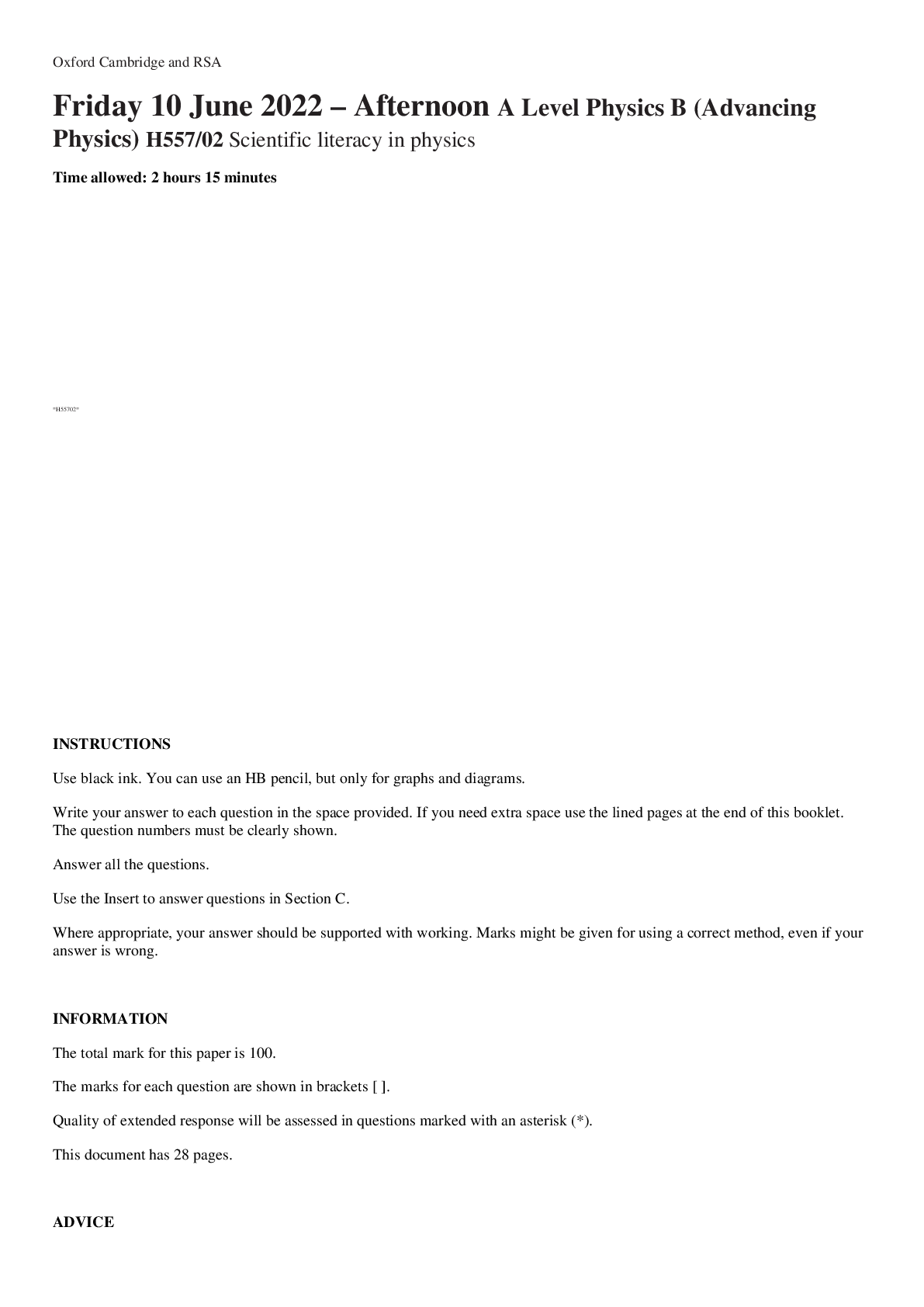
Reviews( 0 )
Document information
Connected school, study & course
About the document
Uploaded On
Jun 14, 2023
Number of pages
34
Written in
Additional information
This document has been written for:
Uploaded
Jun 14, 2023
Downloads
0
Views
28

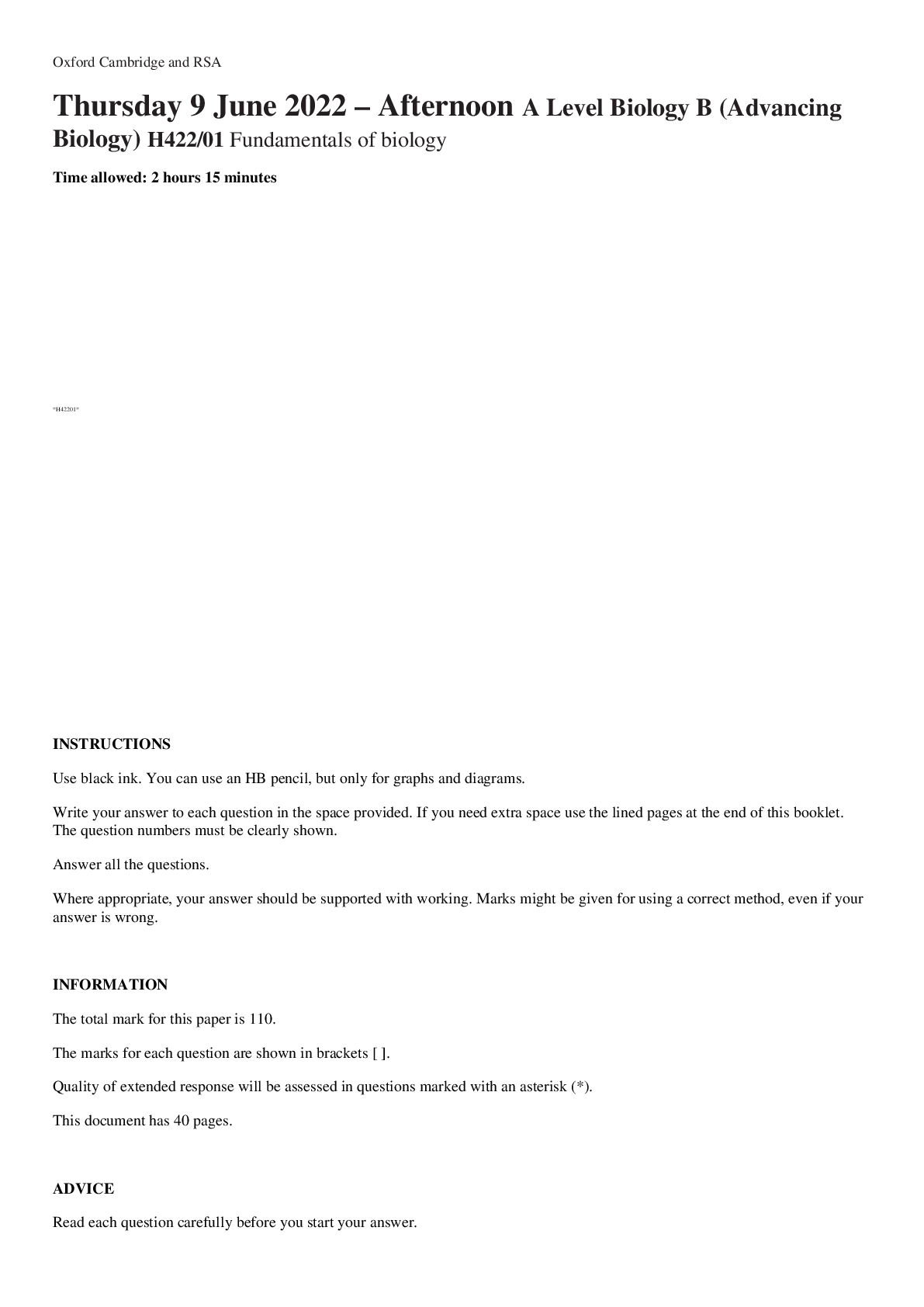
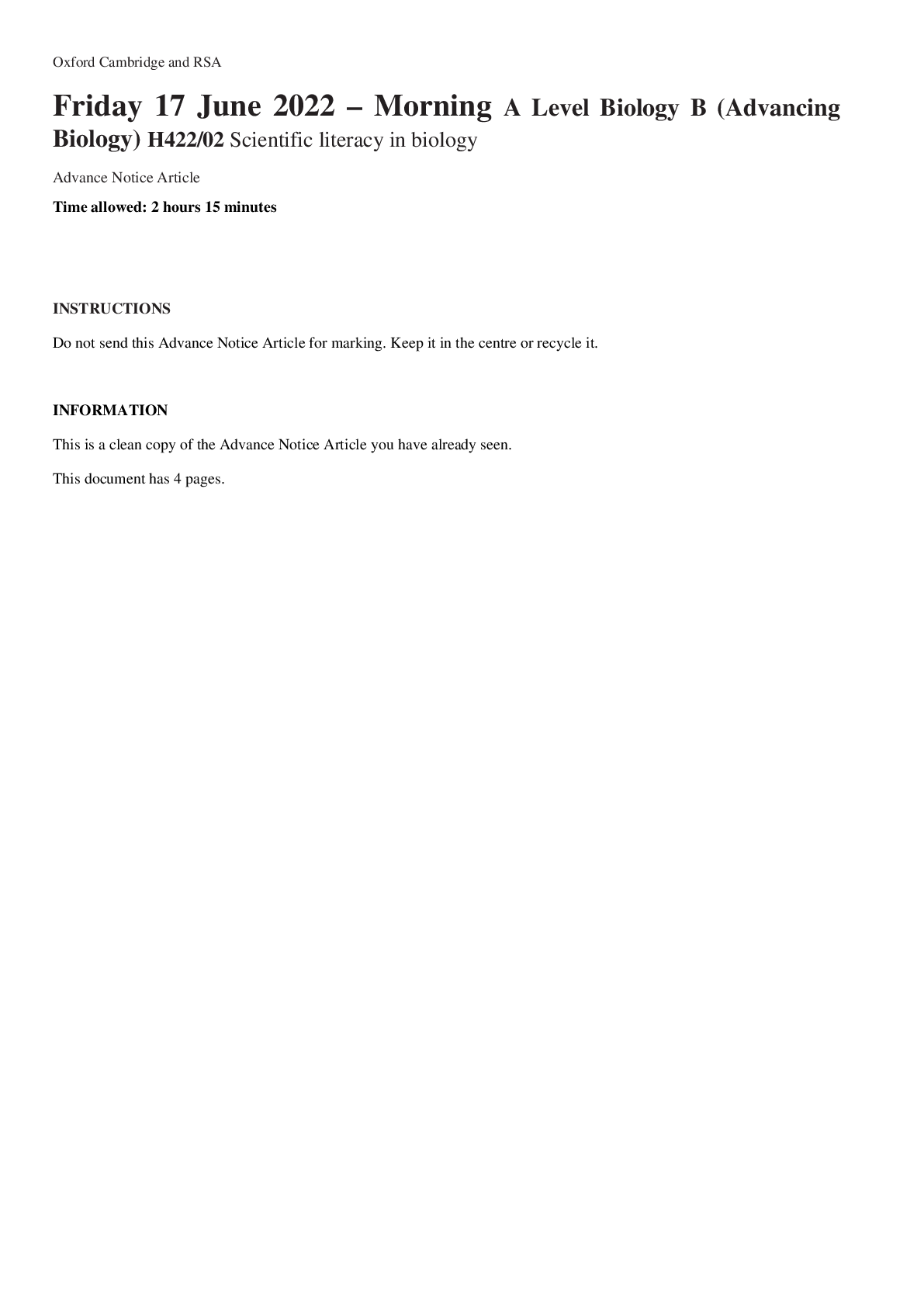
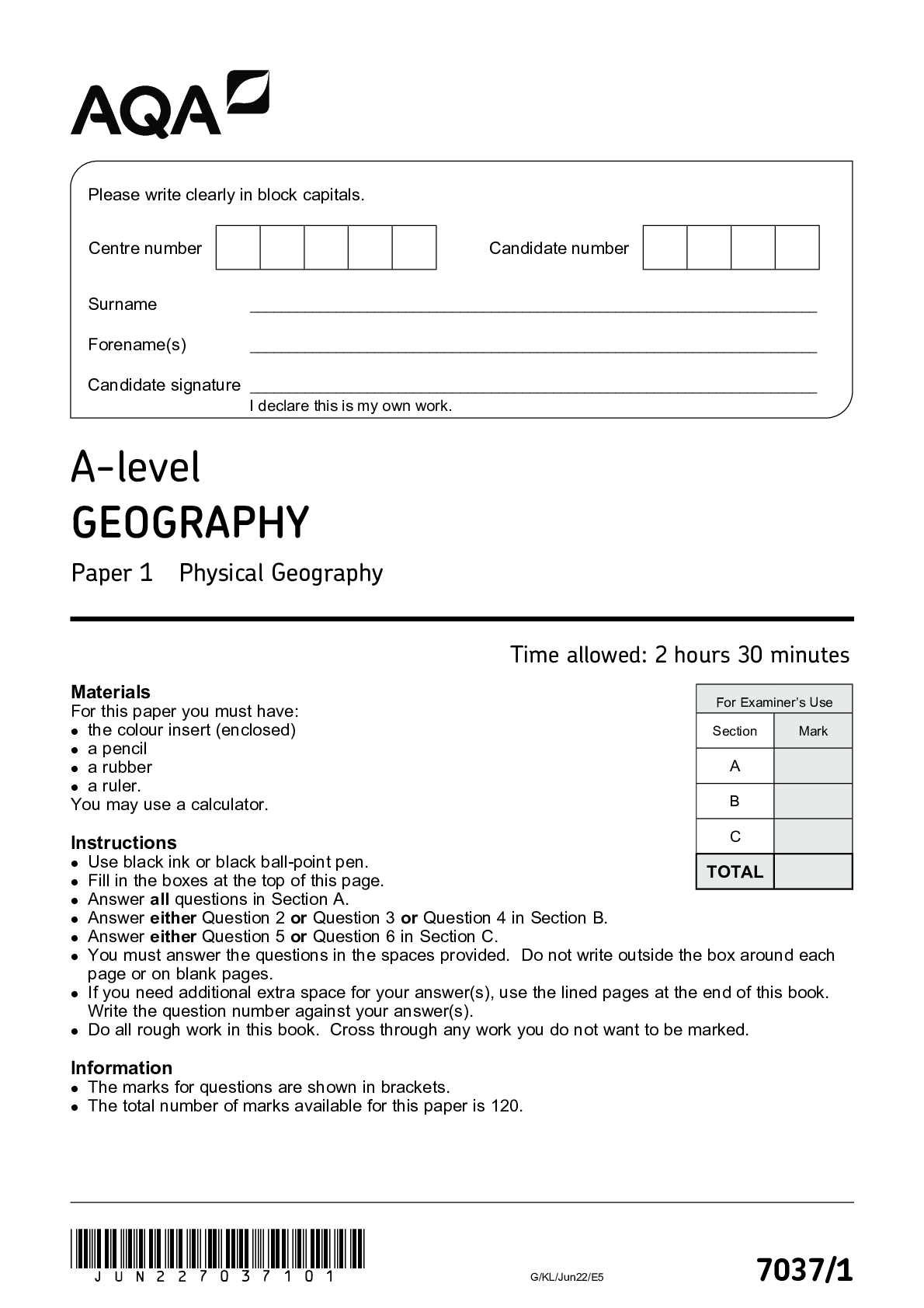
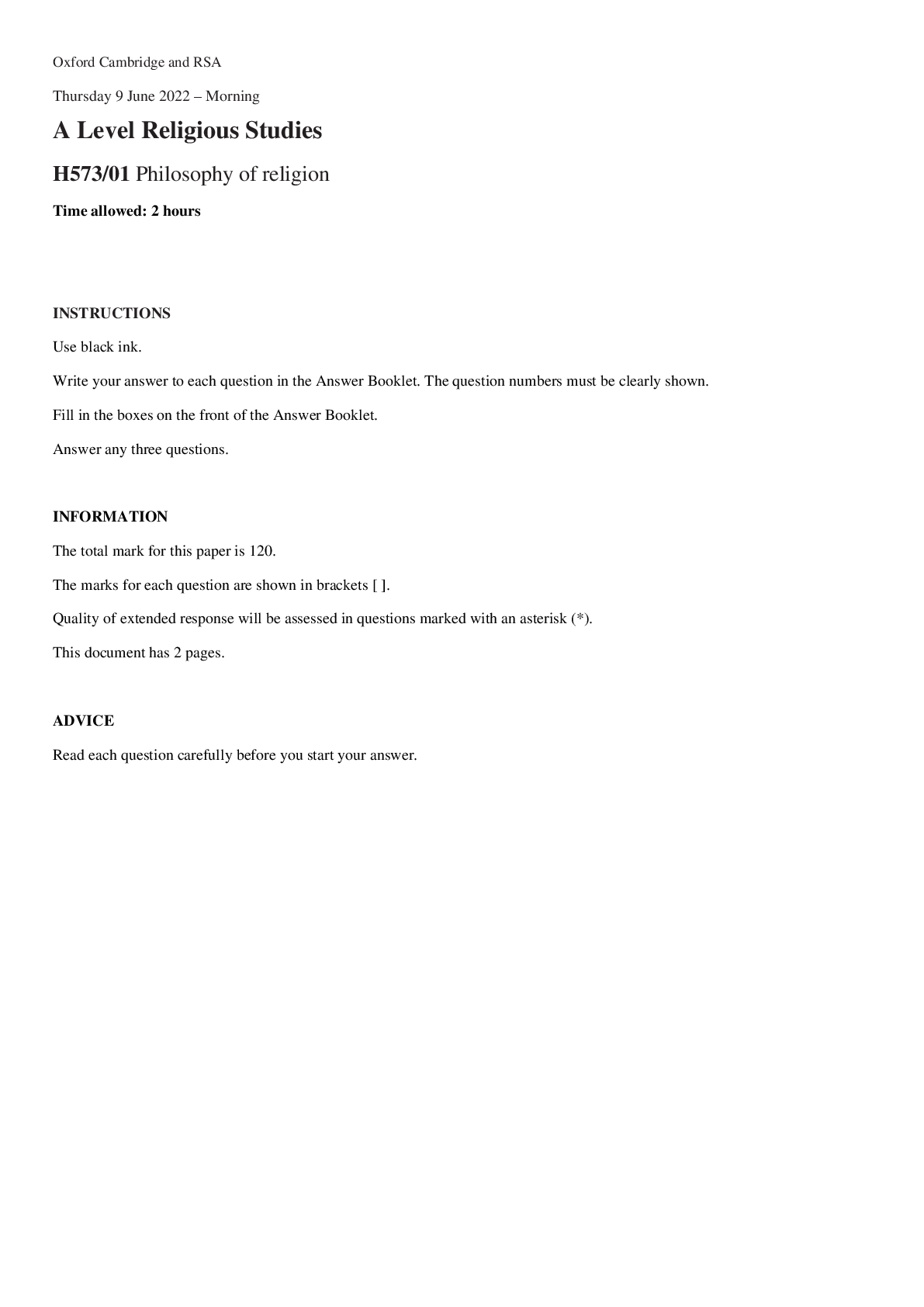
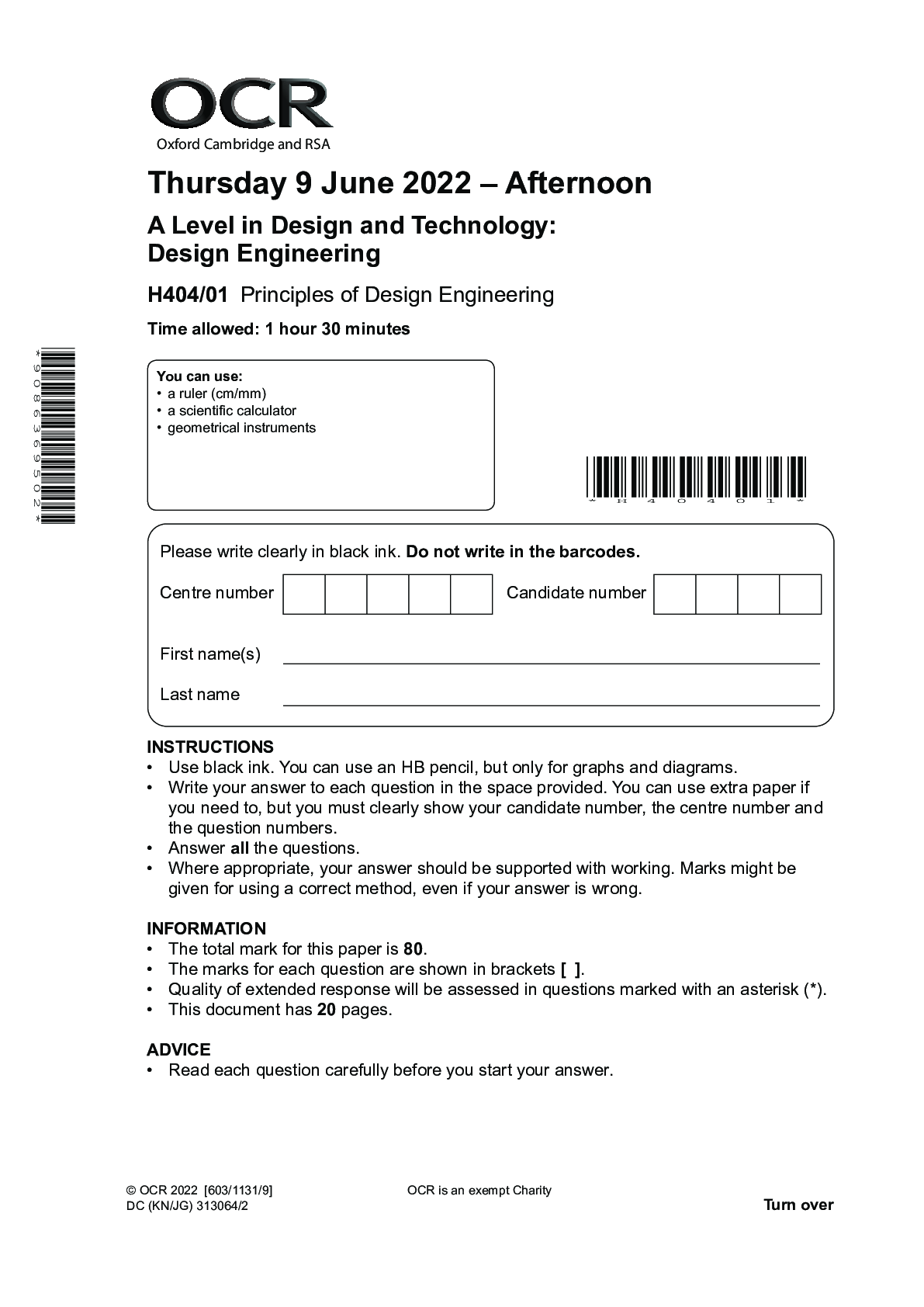
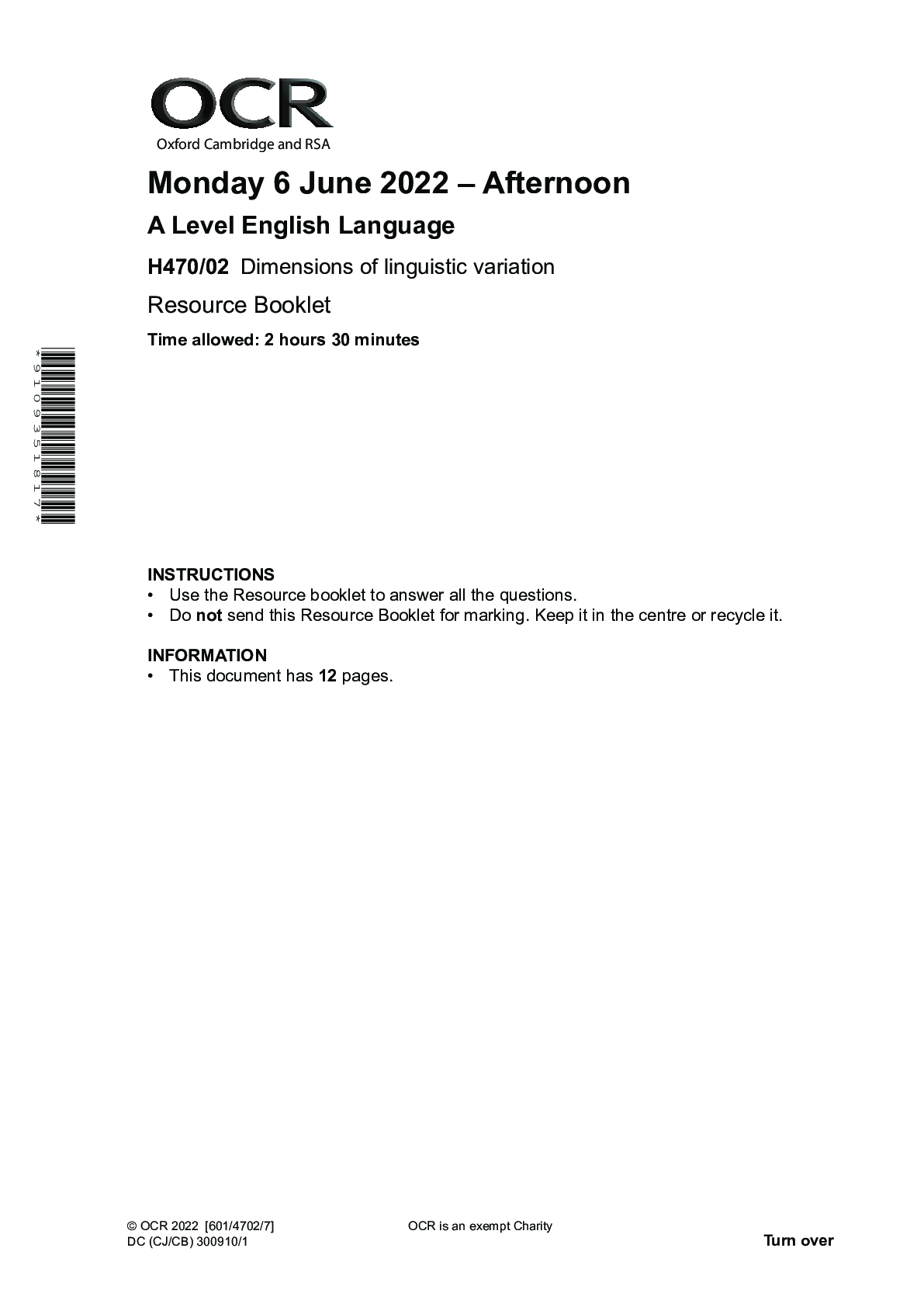
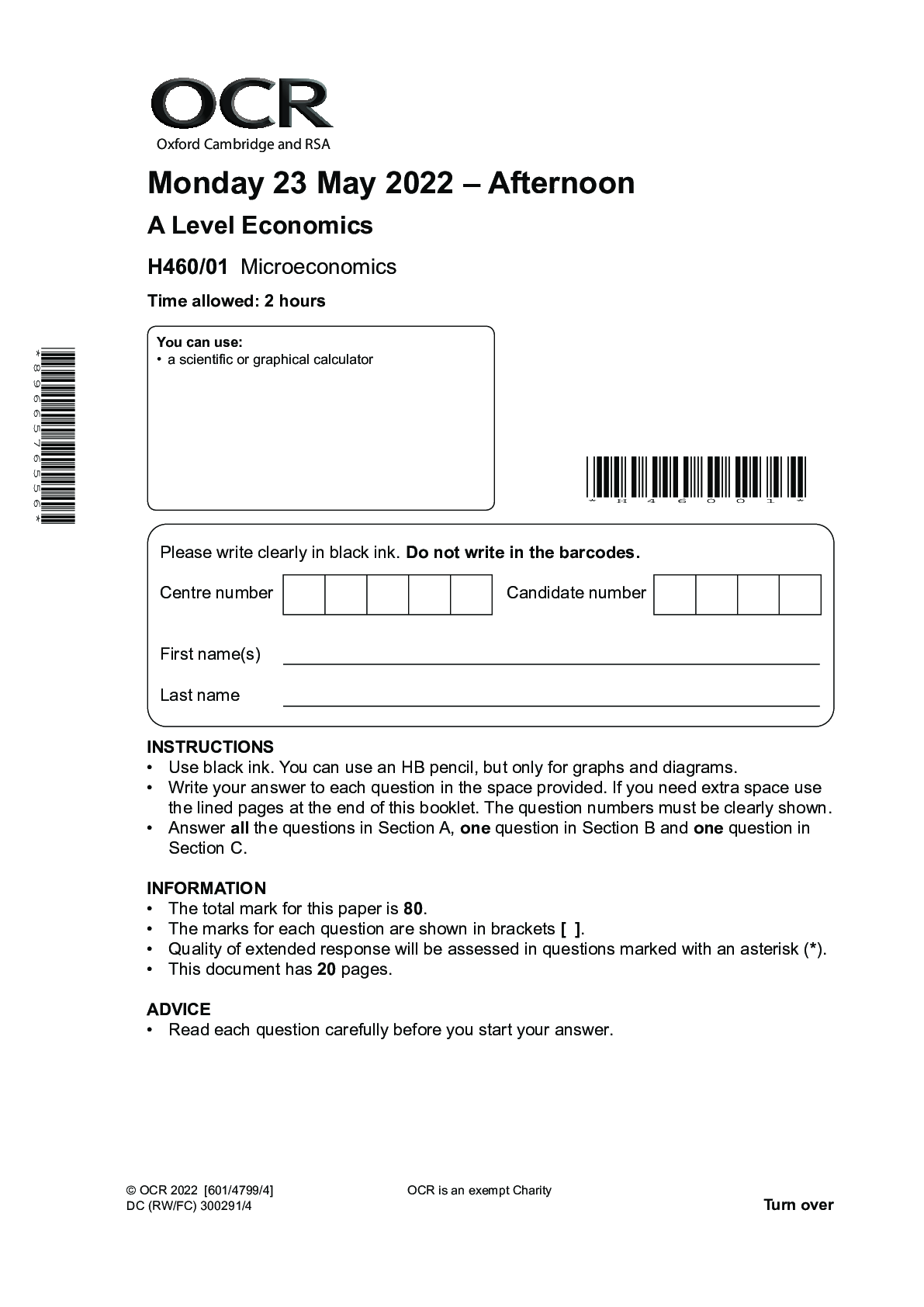
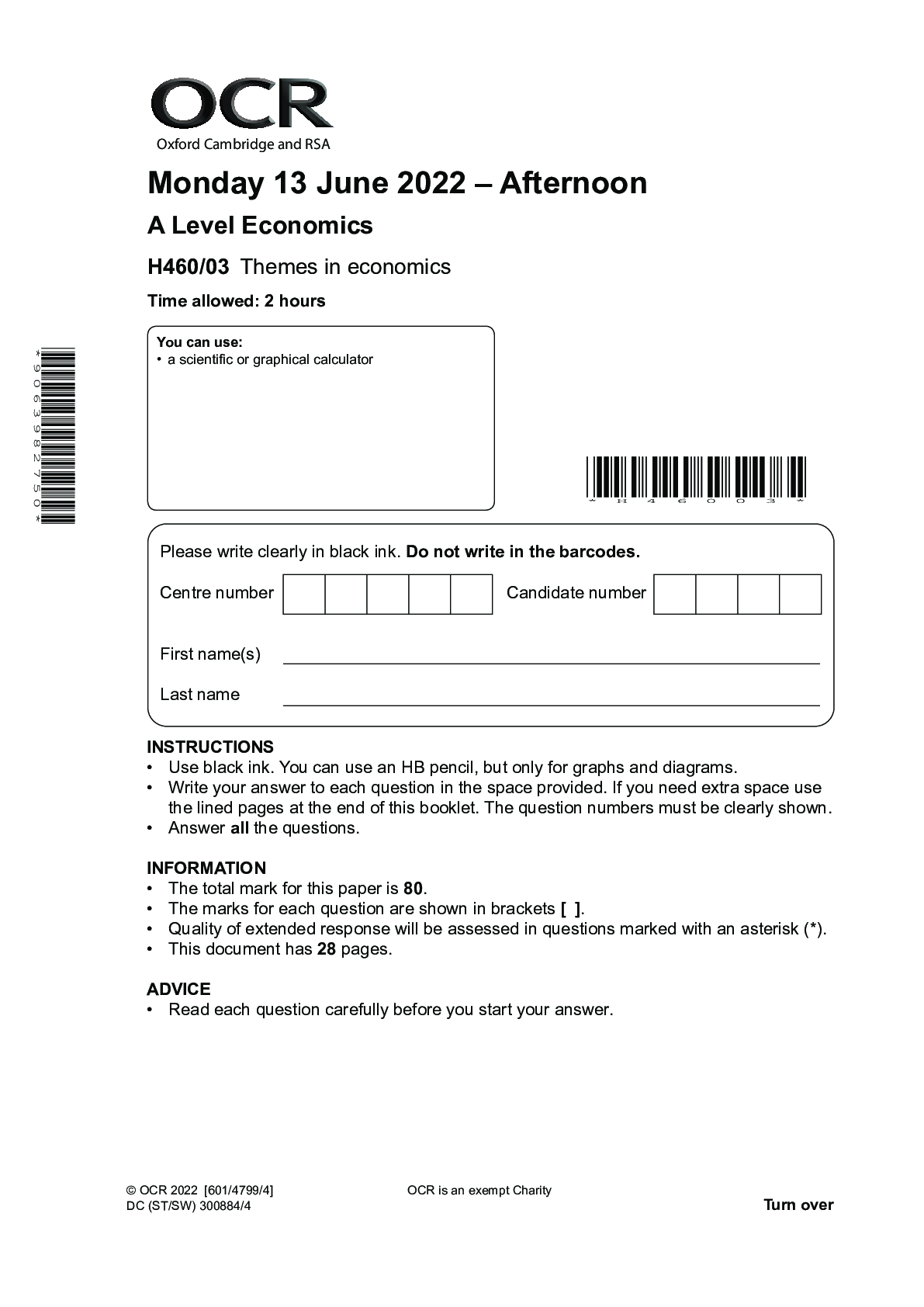
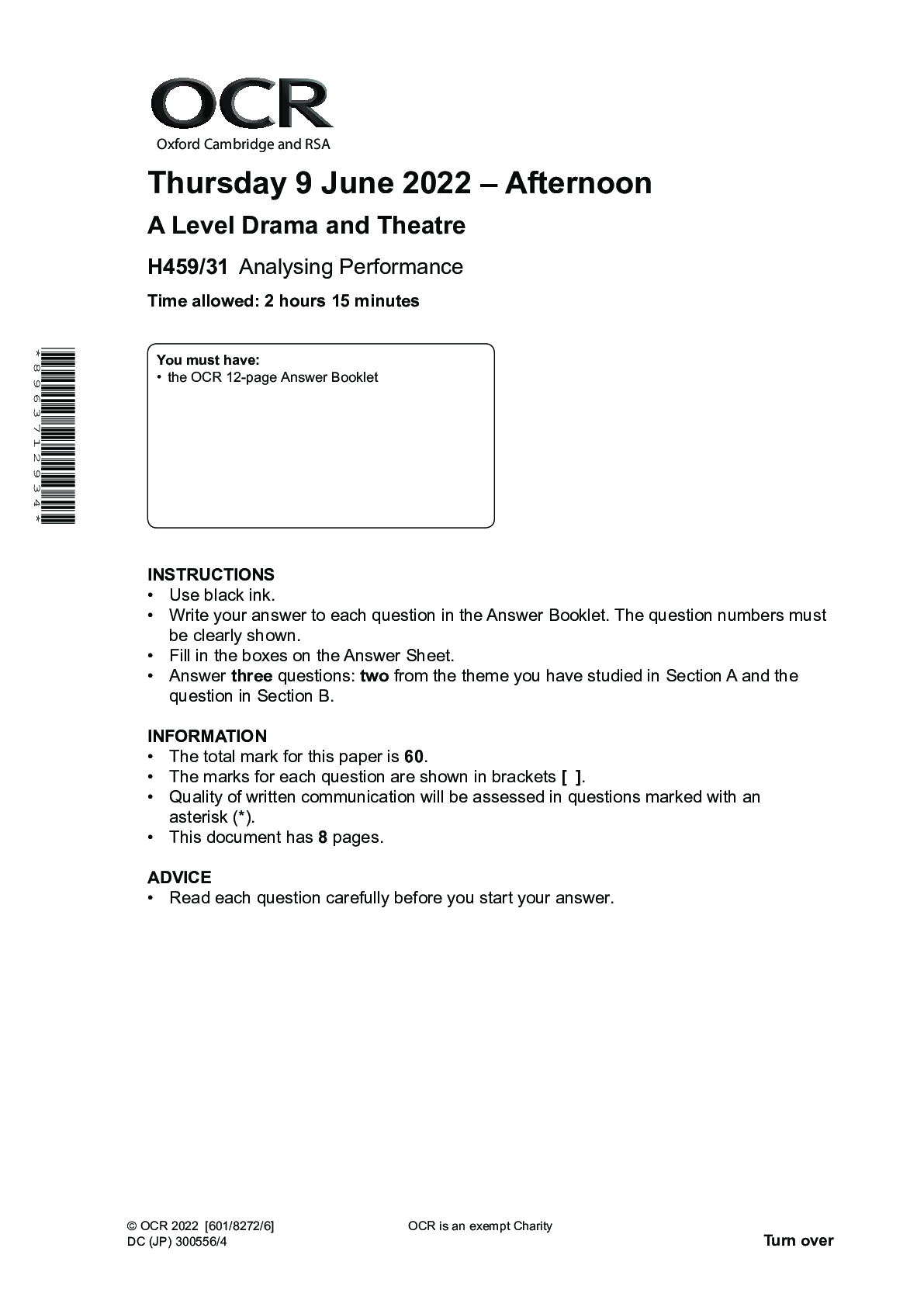




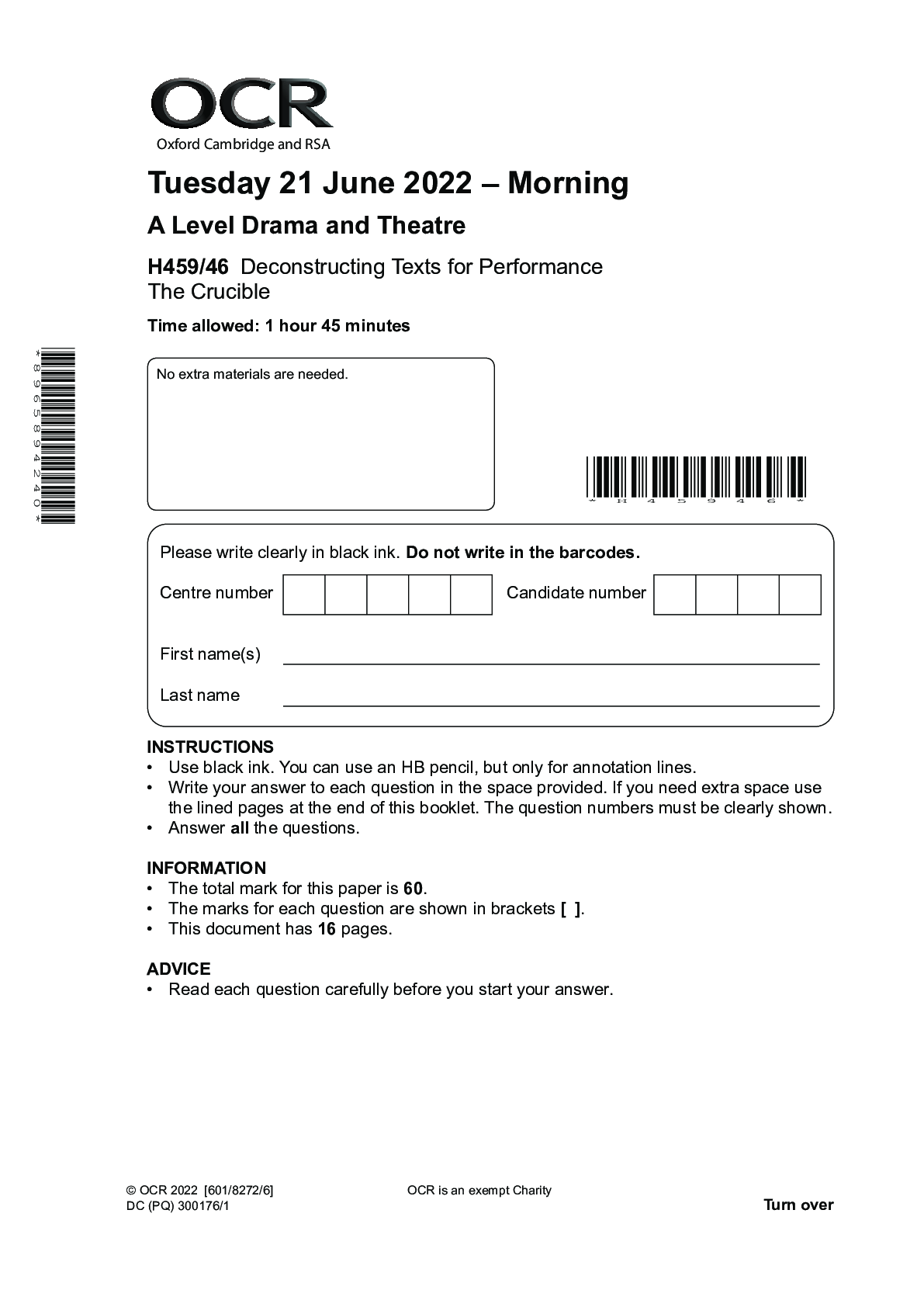
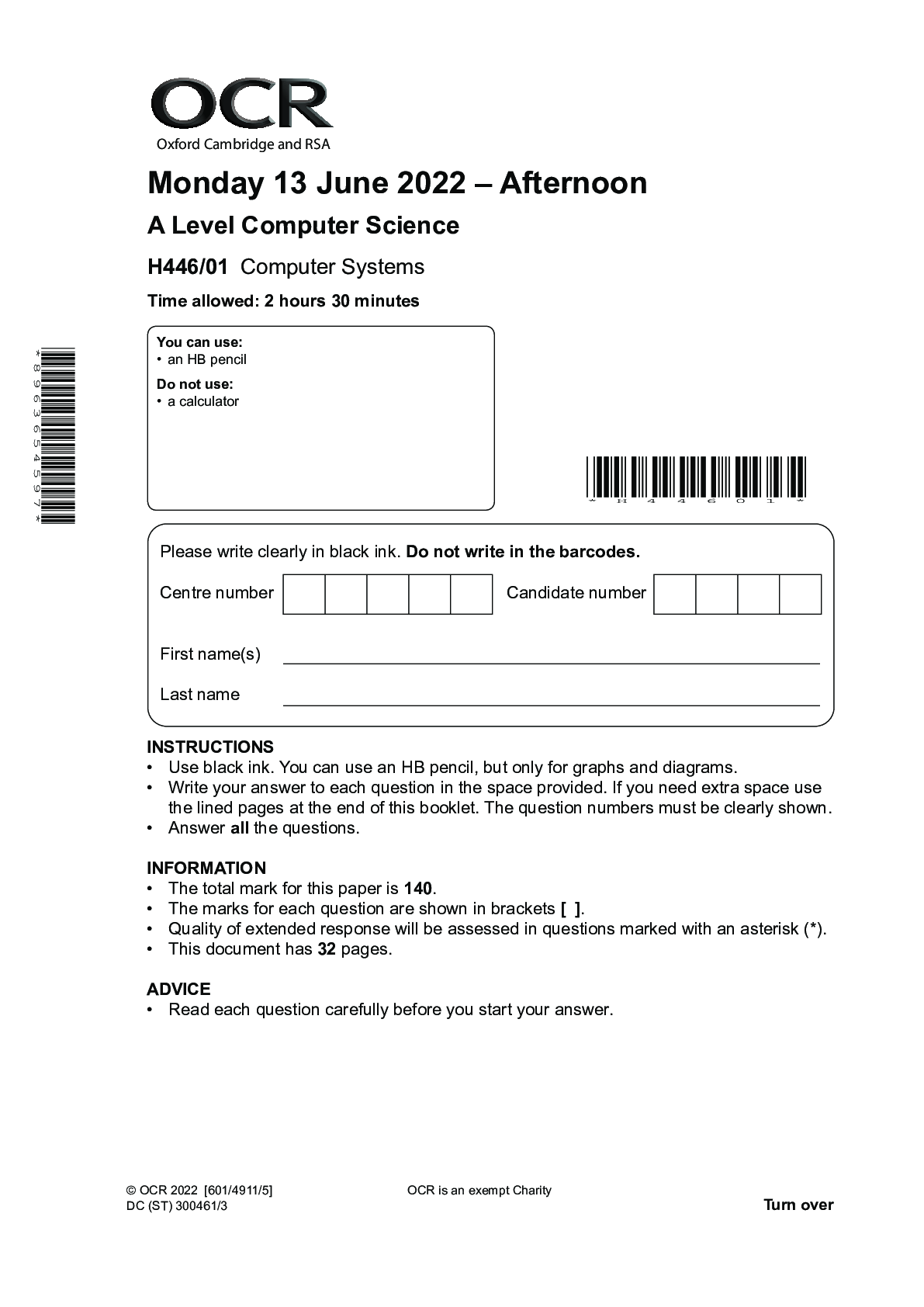
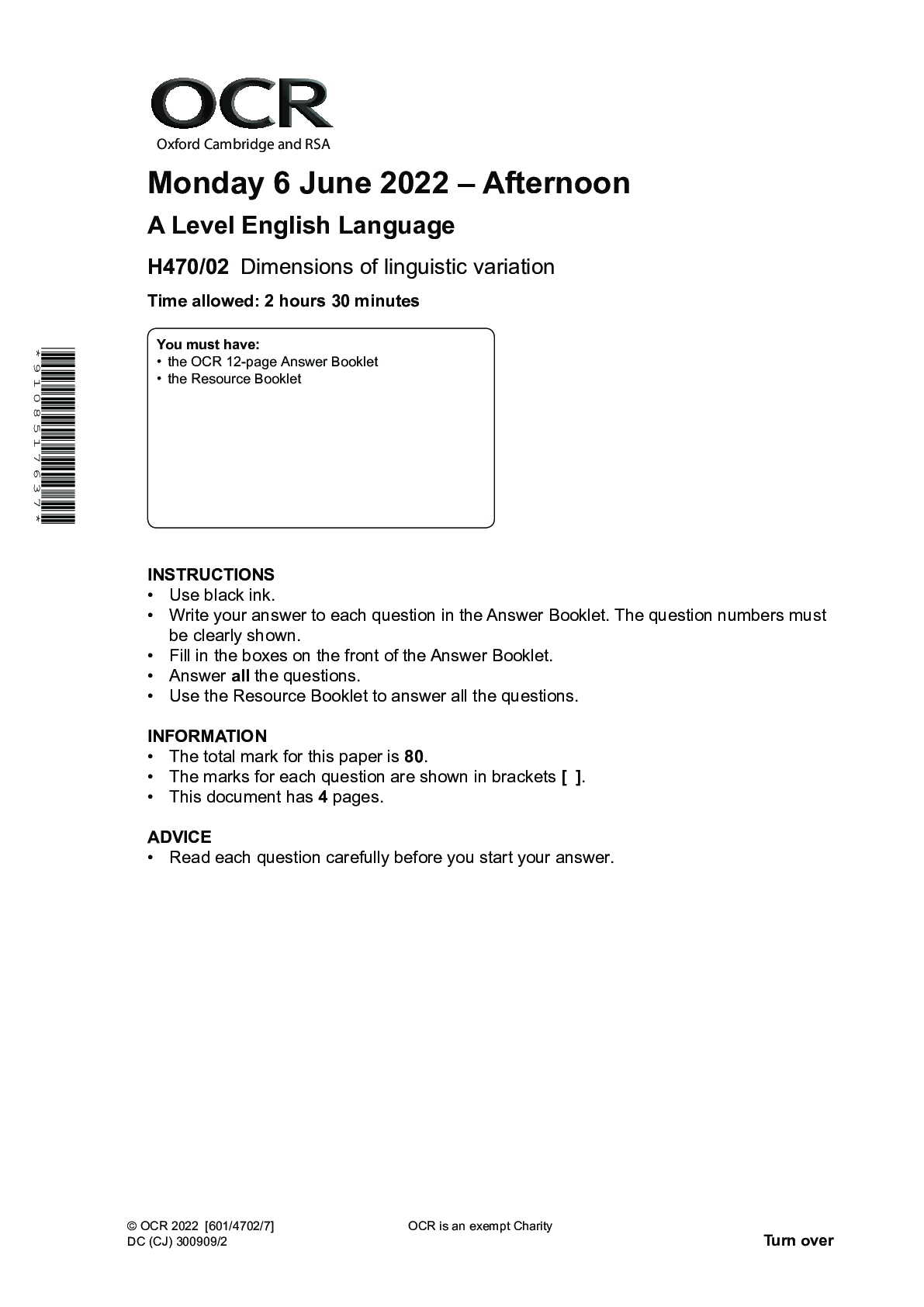
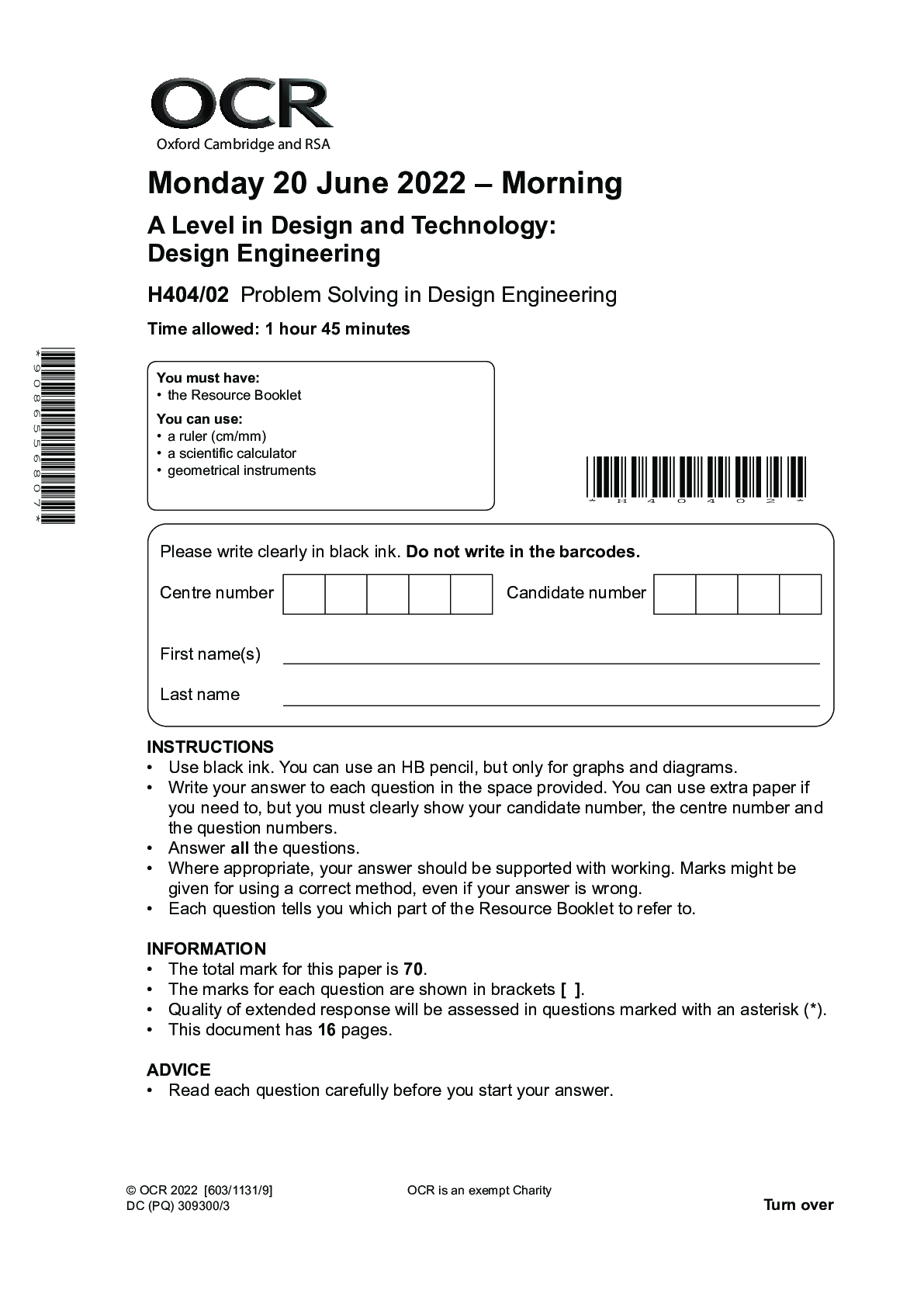

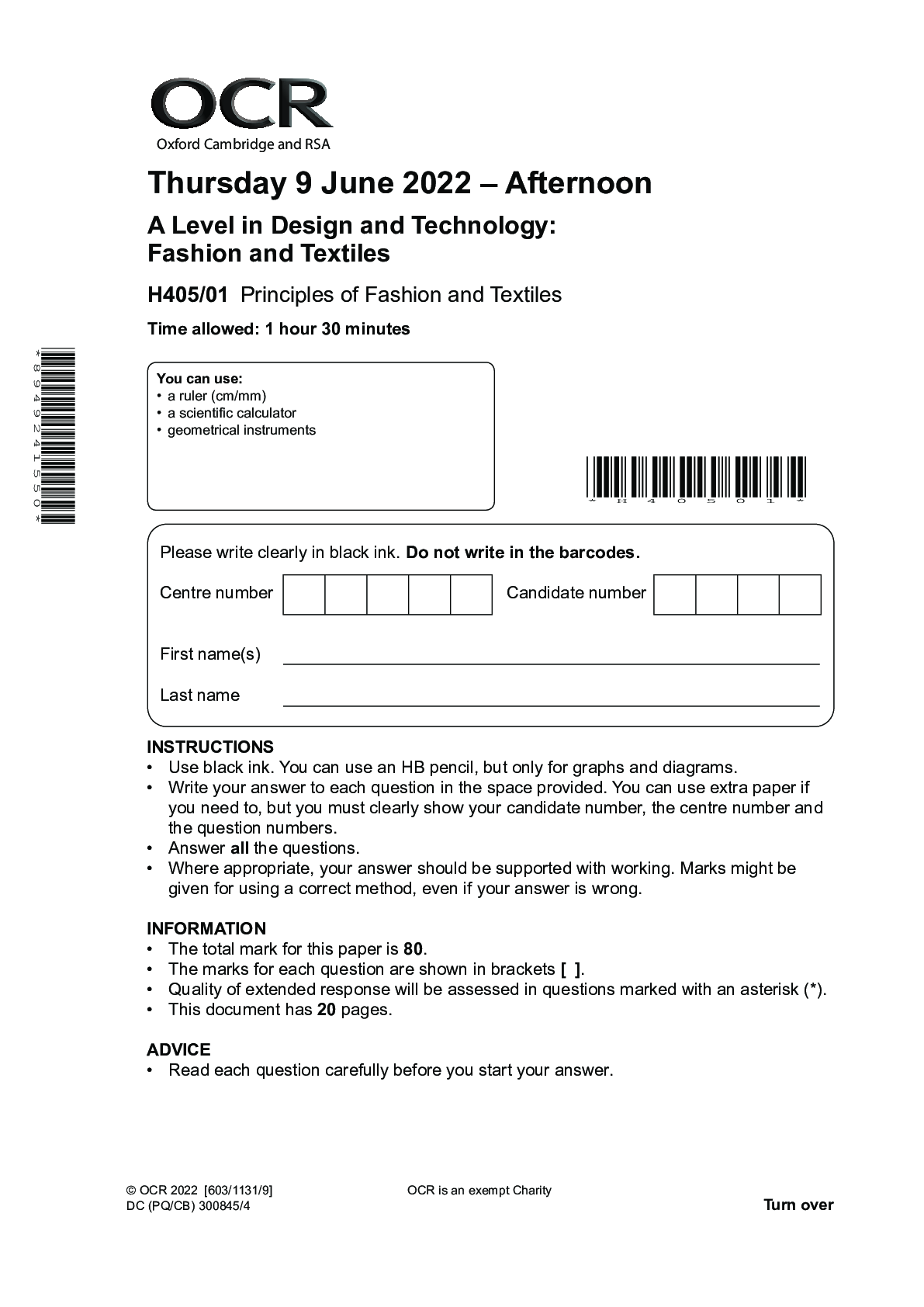
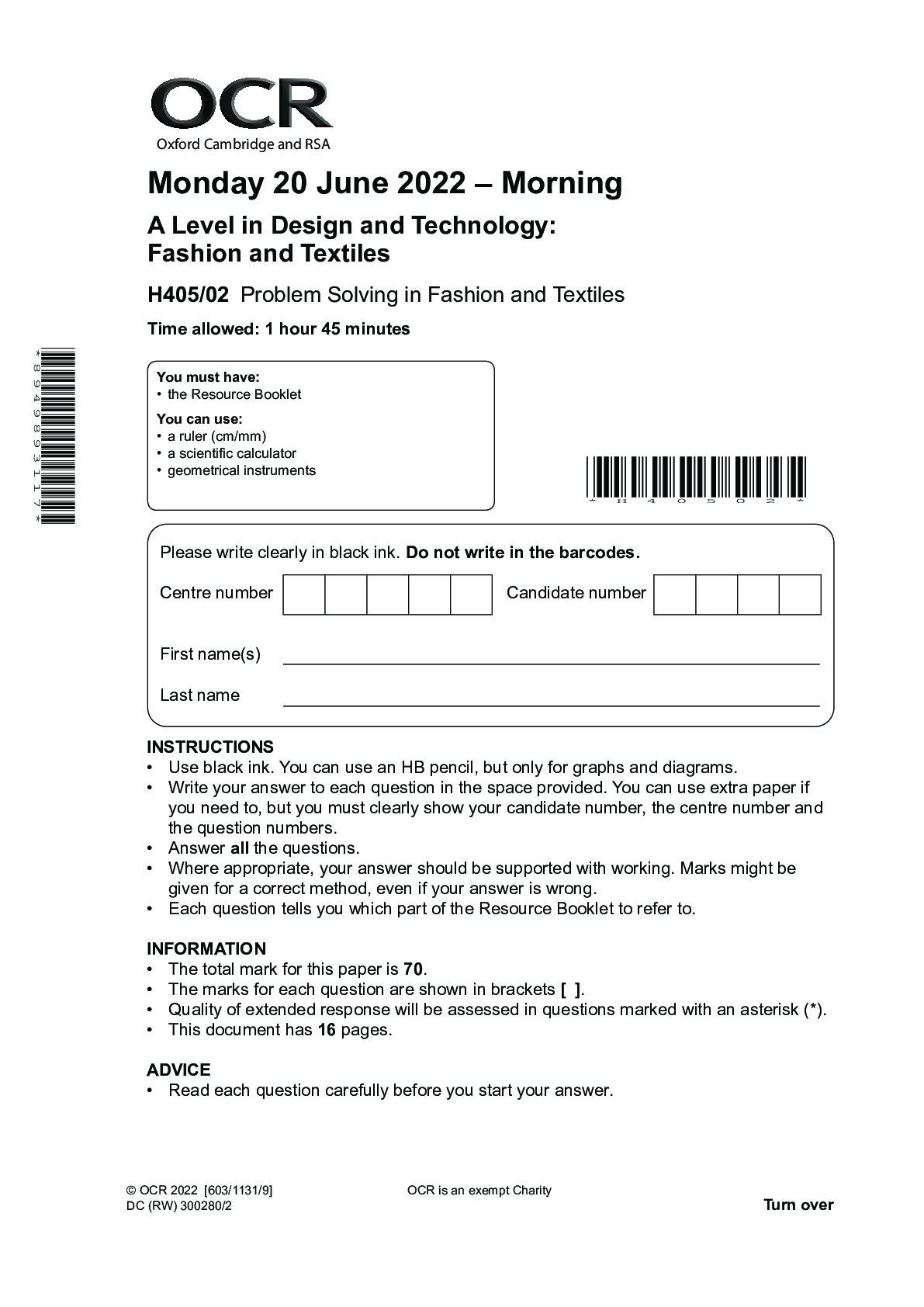
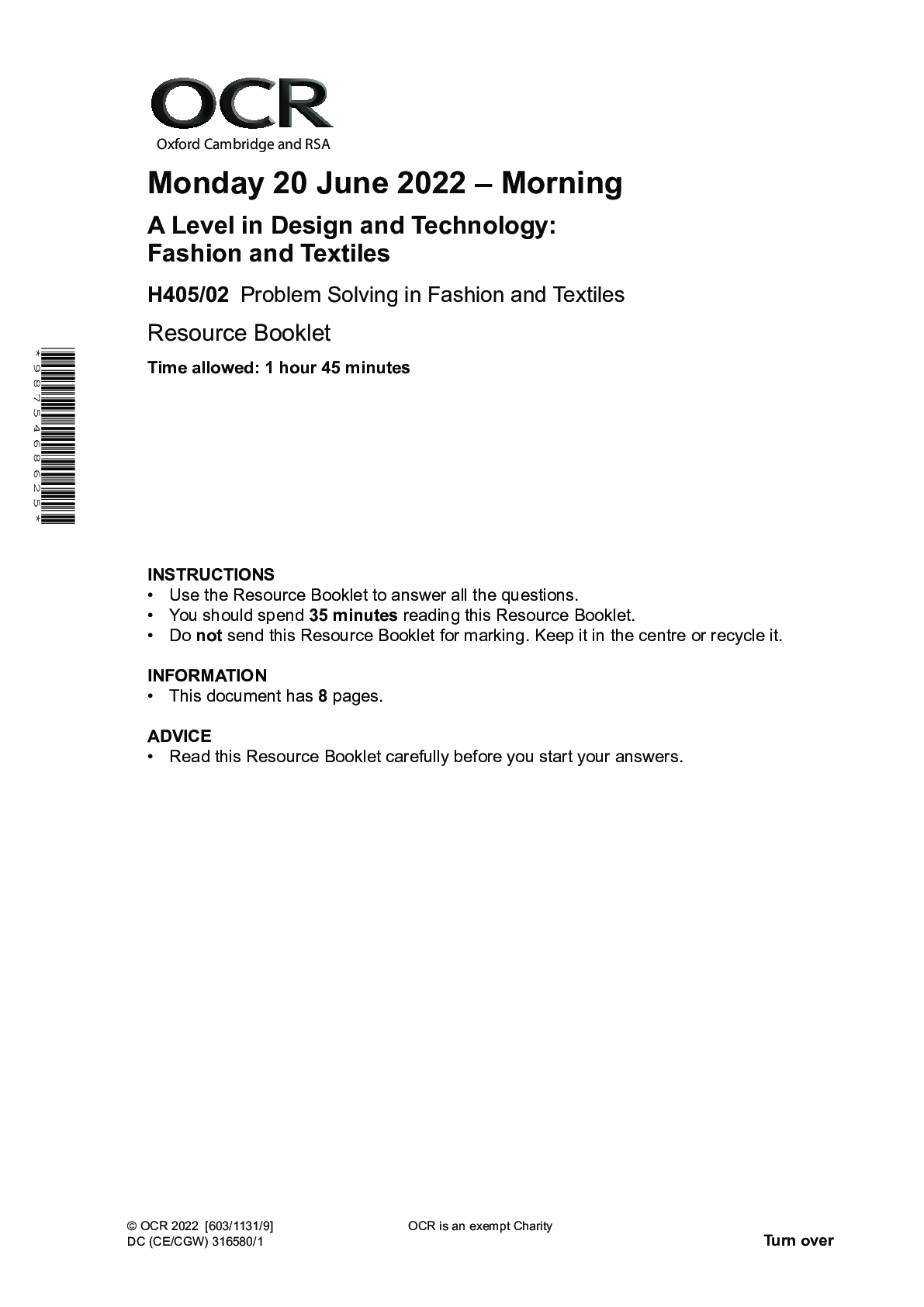
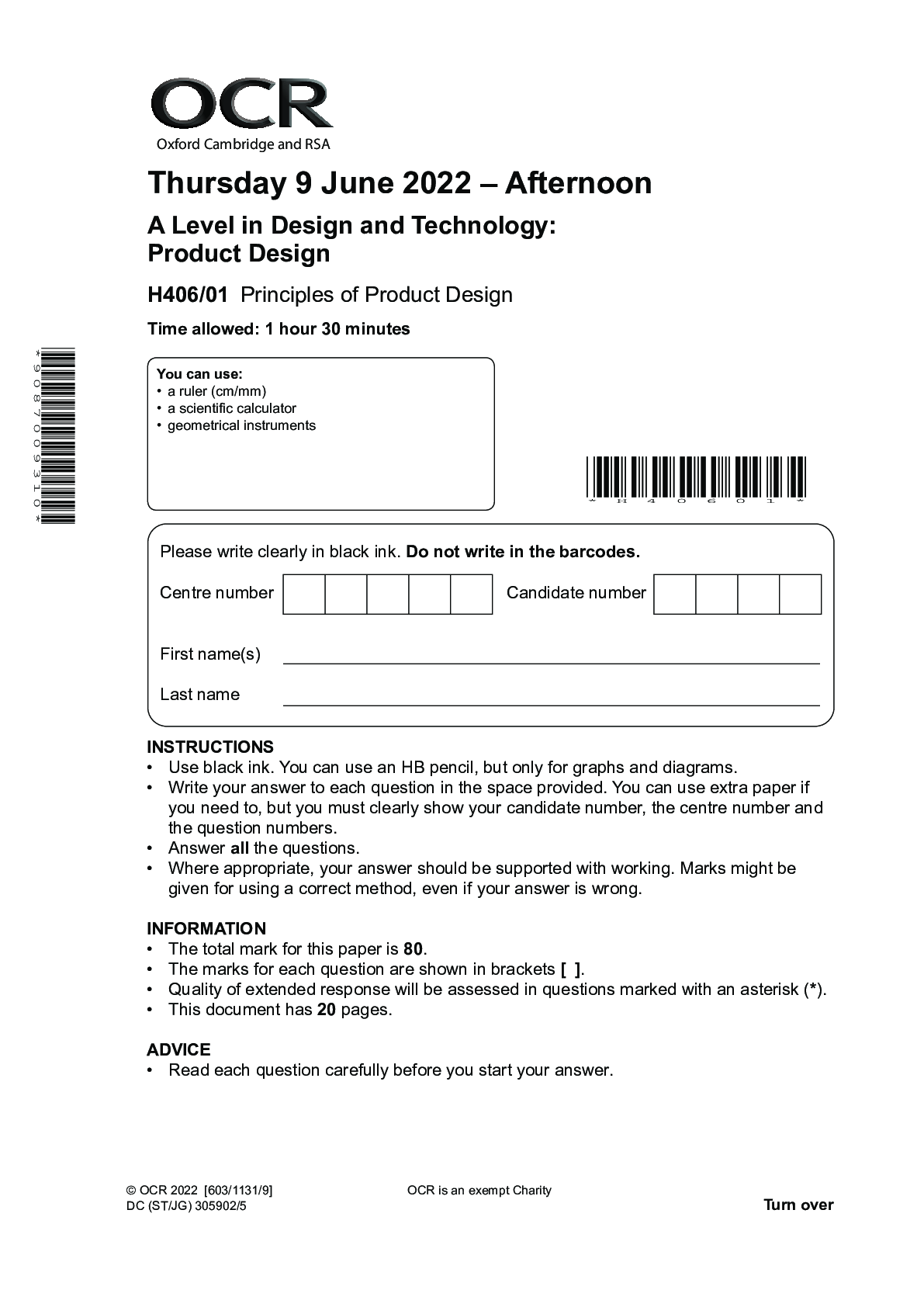
 H474-03 Reading as a writer, writing as a reader Thursday 16 June 2022 – Afternoon.png)

